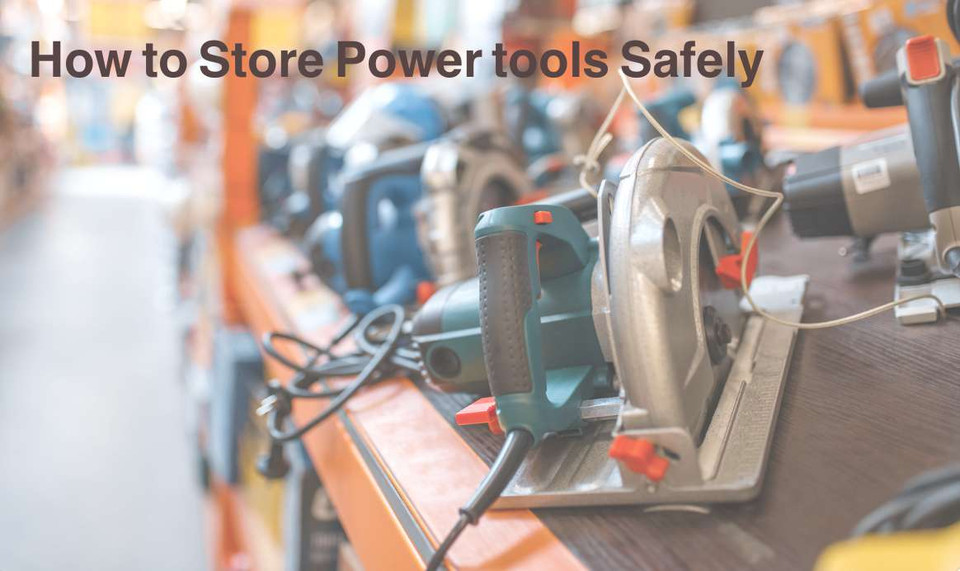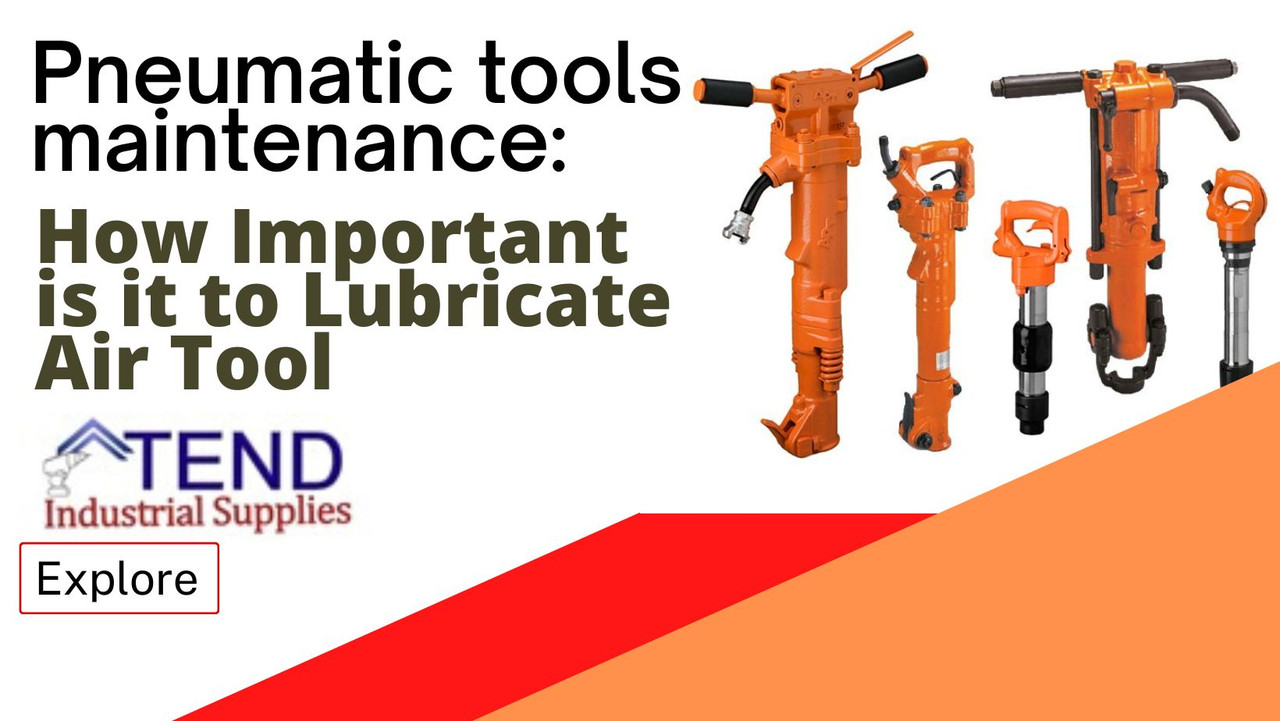Pneumatic tools maintenance: How Important is it to lubricate air tools?
What are air tools?
Air tools or Pneumatic tools are powered by compressed air. Common types of these air-powered you may already know about that are used in the industry include buffers, nailing and stapling guns, grinders, drills, jackhammers, chipping hammers, riveting guns, sanders, and wrenches. In a situation that does not have sufficient space and calls for portability, a pneumatic (air) tool can also be driven by carbon dioxide in a compressed seamless cylinder. This article is part of a series of maintenance tips we are gathering for the maintenance of air tools because air tools are not that cheap. We want anyone investing in air tools to enjoy them for a long time.
Air tools can also be a little pricy than cordless or electric power tools, and this is because they last far longer than other types of power tools; keeping them maintained increases the working life of the tool. How important is it to lubricate air tools? the quick answer is very important
Importance of lubricating air tools
The significant concern mitigating against the life span of our professional air tools is water in all its forms, whether in the liquid or gaseous stage. Water is one of the most dangerous enablers of rusting. It is a process whereby oxygen mixes with metal surfaces to degrade the integrity of the metal, thereby causing it to distroy or weaken. Water can be dangerous for air tools, and the question now is how water comes in contact with your air tool? When air is compressed to be used on the air tool, When this air is compressed, moisture in the inlet air concentrates with every amount of air drawn in. As you compress air, it gets significantly, and because the air is hot, the accumulated water in it remains a vapor; however, when compressed air is expanded through air tools, it cools rapidly. With high moisture content in the compressed air, this rapid cooling has been known to cause freeze-ups at the exhaust ports of pneumatic tools. Even before this hot, moist compressed air reaches the air tool, it starts to cool down just after leaving the compressor. It then starts to condense this moisture into water.
Hence in the environment where air tools are used, the device is exposed to water in different forms. Moisture or other water-related issues are known to be the primary cause of degradation and failure of industrial and professional air tools, one of the ways to avoid these corrosion-causing build-ups of moisture or water is to run air tools with high inlet temperature air. However, we must be careful because this hot air also drys up the tool's lubricants, causing surface-to-surface contacts, which oils help to avoid; it can also worsen the efficacy of gaskets, o-rings, and other items in the installation. Another crucial issue is ensuring pneumatic tools are appropriately used by considering safety.
It is essential to have a system that includes drying the air to avoid moisture, water vapors, or exposure to anything that could cause rust. Compressor systems that have after-treatment solutions cannot even entirely stop the build-up of water vapor because it is always part of the air itself; all try to control moisture as much as possible.
Investment in the quality pneumatic tool should include investment in keeping it maintained to last for a longer time so that you can enjoy some profits. Some of the best ways to keep pneumatic tools in top condition include the following.
The rules that must be adhered to keep your air tool in top condition include:
- Avoid moisture build-up inside tool components; pneumatic tools should be oiled regularly (during and when not in use).
- Service your tool at least every year even when you don't use it; some tools can last for as long as 20 years if they are top quality, like the Shinano brand made in Japan.
Pneumatic tools are designed with lots of intricate systems of gears, pistons, o-rings, rotors, gaskets, and so on; they are built together to convert the compressed air energy into usable energy to rotate, pound, saw, or drill as can be seen in air drills, nailers, polishers, etc. When the air interacts with these parts and converts to energy, it produces moisture within the tool, and this moisture mixes with the lubricating oil, which is already inside the device; it cools down, and the mixture of the lubricating oil and moisture becomes an emulsion which is unlikely a good lubricant and can begin to impact the tool badly such as metal to metal surface contacts and binding of pistons which in turn generate heat and causing wear and tear and loss in tool performance. Also ensure to follow all available safety protocols when using these tools to avoid personal injuries. Other important tip is to ensure air tools are stored properly
Readers also like
How to store your Power tools safely

Pneumatic lubricants oil for only air tools
Air Tool Oil or Pneumatic Lubricant is the same, formulated to meet the unique requirements for industrial, household, and agricultural air tools. Air tool oil is used to keep air-powered tools maintained and working. Oil is applied to the air intake. It moves through the device as air passes through it during use, lubricating all exposed parts. Air tool lubricant reduces friction on moving elements to prolong lifespan and prevent premature parts failure. Air lubricating oil is placed in the air intake valve of air-powered tools before use as the manufacturer recommends or as the need arises. The oil used for air tools is often non-detergent and formulated with anti-rust agents and additives designed to meet strict industry requirements. Some lubricants will degrade o-rings, seals, and other components in pneumatic tools. Special oil labeled "air tool oil, "pneumatic lubricants" is sold in hardware stores or online shops. It is essential only to use recommended lubricants for air tools. Do not use just WD 40 lubricants, compressor oil, three in-1 oil, and any lubricants that are not especially recommended for air tools. Examples of excellent air tool brands in our online shop include a broad selection of pneumatic tool oil by top-rated brands, including Bostitch, DeWalt, Paslode, and Kilfrost. Kilfrost pneumatic tool oil is ideal during colder temperatures to stop moisture from freezing in the lines.
Use only lubricating oil for air tools
Air Tool Oil or Pneumatic Lubricant is the same, formulated to meet the unique requirements for industrial, household, and agricultural air tools. Air tool oil is used to keep air-powered tools maintained and working. Oil is applied to the air intake. It moves through the device as air passes through it during use, lubricating all exposed parts. Air tool lubricant reduces friction on moving elements to prolong lifespan and prevent premature parts failure. Air lubricating oil is placed in the air intake valve of air-powered tools before use as the manufacturer recommends or as the need arises. The oil used for air tools is often non-detergent and formulated with anti-rust agents and additives designed to meet strict industry requirements. Some lubricants will degrade o-rings, seals, and other components in pneumatic tools. Special oil labeled "air tool oil, "pneumatic lubricants" is sold in hardware stores or online shops. It is essential only to use recommended lubricants for air tools. Do not use just WD 40 lubricants, compressor oil, three in-1 oil, and any lubricants that are not especially recommended for air tools. Examples of excellent air tool brands in our online shop include a broad selection of pneumatic tool oil by top-rated brands, including Bostitch, DeWalt, Paslode, and Kilfrost. Kilfrost pneumatic tool oil is ideal during colder temperatures to stop moisture from freezing in the lines.
Contact usfor recommended lubricants for your air tools








